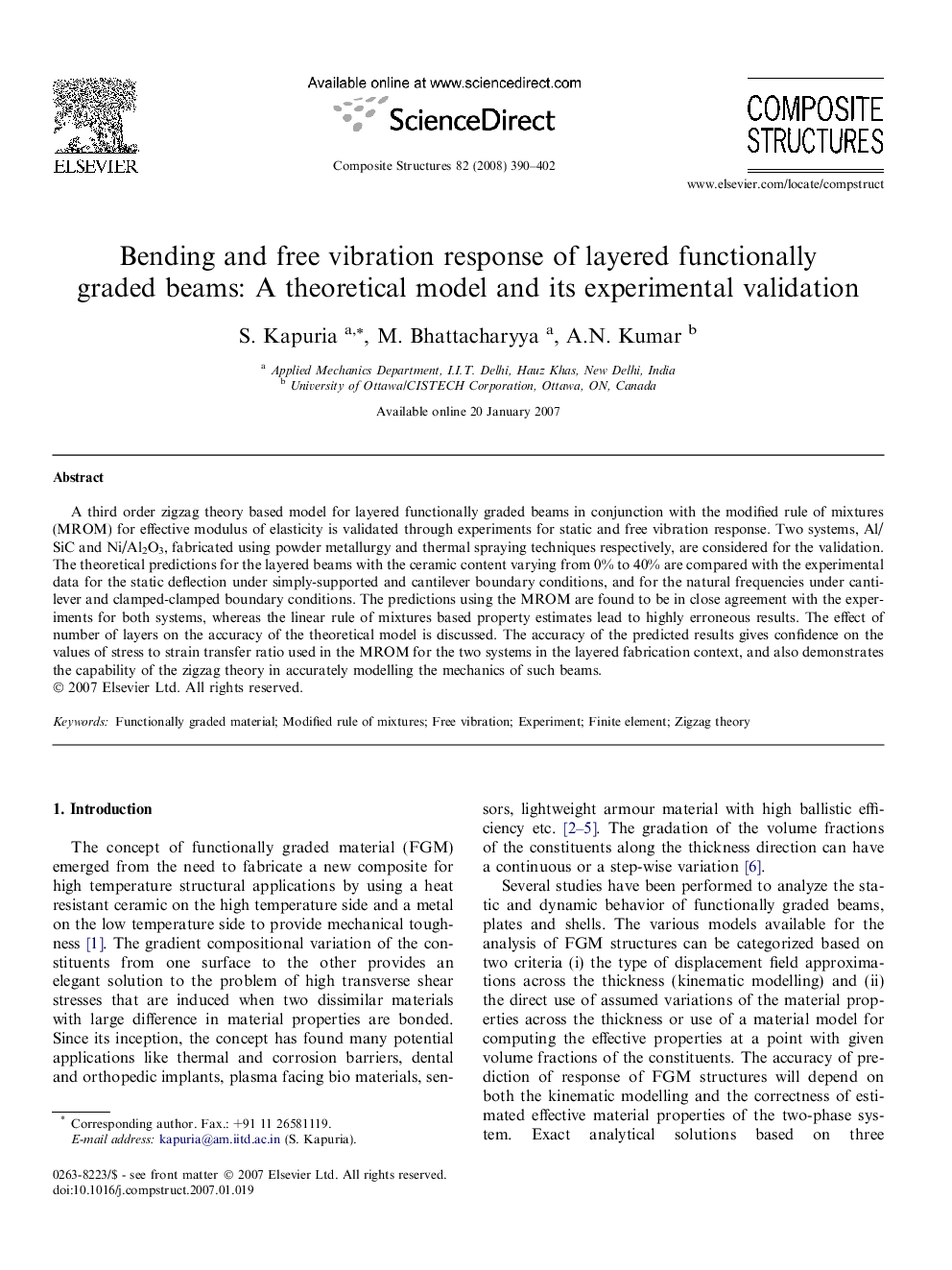| Article ID | Journal | Published Year | Pages | File Type |
|---|---|---|---|---|
| 253744 | Composite Structures | 2008 | 13 Pages |
A third order zigzag theory based model for layered functionally graded beams in conjunction with the modified rule of mixtures (MROM) for effective modulus of elasticity is validated through experiments for static and free vibration response. Two systems, Al/SiC and Ni/Al2O3, fabricated using powder metallurgy and thermal spraying techniques respectively, are considered for the validation. The theoretical predictions for the layered beams with the ceramic content varying from 0% to 40% are compared with the experimental data for the static deflection under simply-supported and cantilever boundary conditions, and for the natural frequencies under cantilever and clamped-clamped boundary conditions. The predictions using the MROM are found to be in close agreement with the experiments for both systems, whereas the linear rule of mixtures based property estimates lead to highly erroneous results. The effect of number of layers on the accuracy of the theoretical model is discussed. The accuracy of the predicted results gives confidence on the values of stress to strain transfer ratio used in the MROM for the two systems in the layered fabrication context, and also demonstrates the capability of the zigzag theory in accurately modelling the mechanics of such beams.
